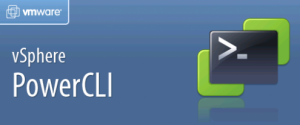 At VMworld 2011 in Copenhagen VMware unveiled a significant revamp of their management suites, including a new version of vCenter Operations Manager (v5 to align with the vSphere release). vCenter Operations is now a suite of tools which includes vCenter Configuration Manager, the new vCenter Infrastructure Navigator (which I’ll cover in a later blogpost) and vCenter CapacityIQ (which is now fully integrated into vCOps, the standalone CapacityIQ is now end of life).
At VMworld 2011 in Copenhagen VMware unveiled a significant revamp of their management suites, including a new version of vCenter Operations Manager (v5 to align with the vSphere release). vCenter Operations is now a suite of tools which includes vCenter Configuration Manager, the new vCenter Infrastructure Navigator (which I’ll cover in a later blogpost) and vCenter CapacityIQ (which is now fully integrated into vCOps, the standalone CapacityIQ is now end of life).
Although announced at VMworld it wasn’t publicly available until Jan 2012 when VMware formally launched vCOps v5. Coming less than a year after the release of the first version it’s apparent that VMware see this as an important product which is evolving fast. Steven Herrod, VMware’s CIO stated recently at the Italian VMUG (around the 5 minute mark) that vCOps ‘is becoming the most adopted new technology that VMware has ever had’. The vCenter Operations suite is still aimed at infrastructure monitoring as opposed to application monitoring (despite the addition of Infrastructure Navigator) – VMware’s solutions aimed at the application tier belong to the vFabric suite. For a good overview of where vCOps and vFabric Hyperic fit into VMware’s cloud suite read Dave Hill’s blogpost on the subject.
If you aren’t familiar with vCenter Operations here are the kind of problems it aims to address;
- Is your virtual infrastructure healthy?
- What serious problems should I address immediately?
- Is the workload in my environment normal?
- Am I using the resources in my environment efficiently?
- How long do I have before resources run out?
- What impact did a recent change have?
A few people have already posted articles which I’d recommend reading;
- David Davis has a great review including available versions, top 5 new features and his conclusions
- Julian Wood posted a good summary along with his initial thoughts
- VMware’s official blogpost about the new features
- My review of the first version of vCOps. A year on it’s still got a few good points and is a good intro to the product
With v1.0 I concluded that it was a great product but there were a few reasons why it wasn’t for me, primarily the lack of email notifications and pricing. In this post I’ll cover the requirements and deployment considerations for the new version and in part two I’ll cover day to day use and new features. The final part will cover the capacity features along with info about pricing and my conclusions.
UPDATE APRIL 2012 – VMware have just launched 2.5 hrs of free training for vCOps.



